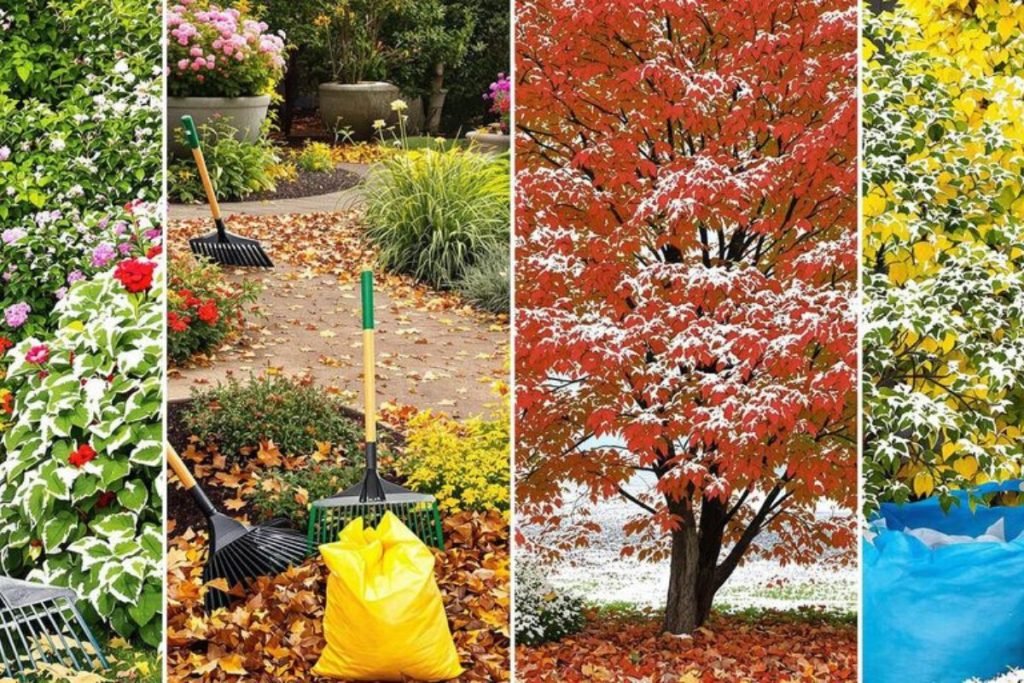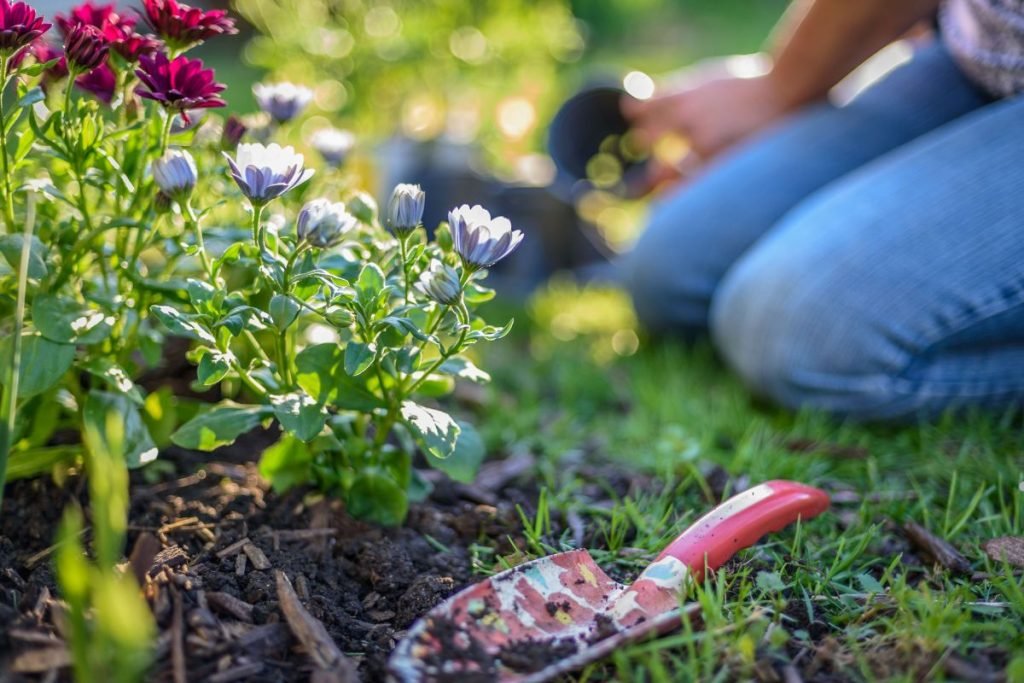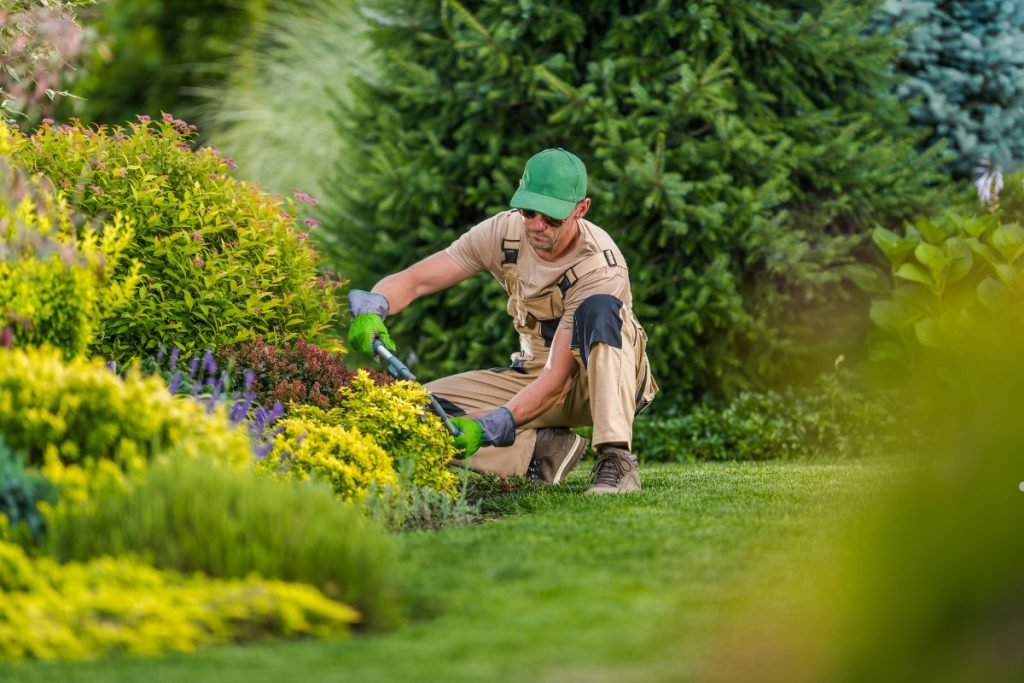
Cleaning up your yard can feel like a never-ending task, but it doesn’t have to be overwhelming. Whether it’s spring, summer, fall, or winter, there are simple steps you can take to keep your outdoor space looking great all year round. Plus, there are eco-friendly ways to handle yard waste and some cool landscaping ideas to make your yard stand out. This guide will walk you through everything you need to know to tackle your yard clean up like a pro.
Key Takeaways
- Yard work changes with the seasons, so plan ahead for spring, summer, fall, and winter tasks.
- Eco-friendly practices like composting and using organic mulch can make a big difference.
- The right tools, like a sturdy rake and a reliable lawn mower, can save you time and effort.
- Simple landscaping ideas, such as adding native plants or pathways, can improve your yard’s look.
- Regular maintenance, like trimming bushes and clearing snow, keeps your yard safe and tidy.
Spring Yard Clean Up Essentials
Preparing Your Lawn for New Growth
Spring is the perfect time to get your lawn ready for the growing season. Start by raking up any leftover leaves, twigs, and debris from winter. This not only helps your yard look tidier but also allows sunlight and air to reach the soil. After that, consider aerating compacted areas to improve water and nutrient absorption. A well-prepped lawn sets the stage for healthy growth. Check out our yard clean up service for professional help in getting your yard ready for spring.
Pruning Trees and Shrubs After Winter
Winter can leave branches damaged or overgrown, so grab those pruning shears. Focus on cutting back dead or broken branches first. Then, shape your trees and shrubs by trimming overgrowth. Pruning not only improves their appearance but also encourages new, healthier growth. Don’t forget to use sharp tools for clean cuts!
Cleaning Up Garden Beds for Planting
Before planting anything new, clear out old mulch, dead plants, and weeds from your garden beds. This gives your new plants a fresh start. Add a layer of compost or fresh soil to enrich the ground. If you’re planning to plant flowers or veggies, now’s the time to map out what goes where.
Managing Springtime Yard Waste
Spring clean-up generates a lot of yard waste, from branches to grass clippings. Consider composting this organic material to create nutrient-rich soil for your garden. If composting isn’t your thing, check with your local waste management for yard waste pick-up options. Bagging and bundling debris properly makes disposal much easier.
Spring yard work can feel overwhelming, but breaking it into manageable tasks makes it way less daunting. Plus, the payoff is a yard that’s ready to thrive through the warmer months.

Summer Maintenance Tips for a Healthy Yard
Watering Strategies for Hot Weather
Keeping your yard hydrated during the summer is no small task. The trick is to water deeply but less often. This encourages roots to grow deeper and makes your lawn more drought-resistant. Early mornings are the best time to water, as less moisture evaporates compared to midday. Aim for about 1 inch of water per week, including rainfall. Use a rain gauge or even an empty tuna can to measure how much water your sprinklers are delivering.
Keeping Weeds Under Control
Weeds seem to thrive in the summer heat, but you can stay ahead of them with a little effort. Start by pulling weeds when the soil is moist—it makes the job easier. Mulching around plants is another great way to block sunlight and keep weeds from sprouting. If you’re using a hoe, opt for a scuffle hoe to slice weeds just below the soil surface. For stubborn weeds, spot-treat with an organic herbicide.
Trimming Hedges and Bushes for Shape
Summer is a good time to give your hedges and bushes a quick trim. Use sharp shears to avoid tearing the branches, and step back every so often to check your work. Aim for a natural shape rather than a rigid one—it’s better for the plant’s health. If you’re trimming flowering shrubs, wait until after they’ve finished blooming. Always clean your tools after use to prevent spreading diseases.
Protecting Your Yard from Pests
Summer pests can wreak havoc on your yard if you’re not careful. Start by keeping your lawn healthy—pests are less likely to invade strong, well-maintained grass. Inspect plants regularly for signs of trouble, like chewed leaves or unusual spots. If you spot an issue, act quickly. You can introduce beneficial insects like ladybugs to eat harmful pests or use insecticidal soap for a more direct approach. Keep an eye on standing water, too, as it’s a breeding ground for mosquitoes.
A little effort each week can save you from bigger headaches later. Summer yard care doesn’t have to be overwhelming if you tackle tasks consistently.
Fall Yard Clean Up for a Fresh Start
Raking and Disposing of Fallen Leaves
Fall means leaves everywhere. They’re beautiful, sure, but they can smother your lawn if left too long. Raking regularly can prevent your grass from suffocating under a pile of wet leaves. If you’re tired of bagging them up, consider using a mulching mower to chop them into tiny bits that can act as a natural fertilizer. Otherwise, composting is a great way to turn those leaves into garden gold for next season.
Preparing Your Lawn for Winter Dormancy
Before the first frost hits, take care of your grass. Aerate your lawn to loosen compacted soil and help nutrients sink in. Then, apply a fall fertilizer rich in potassium to strengthen the roots for winter. Don’t forget to mow one last time, but keep the grass slightly taller to protect it from freezing temperatures.
Planting Bulbs and Late-Season Flowers
Fall is the perfect time to plant spring-blooming bulbs like tulips and daffodils. Dig holes a few inches deep, drop in the bulbs, and cover them up. You can also add some hardy flowers like pansies or ornamental kale for a splash of color that lasts through the cooler months. Just make sure to water them well after planting.
Cleaning and Storing Outdoor Tools
Once the heavy yard work is done, take the time to clean your tools. Wipe off dirt, sharpen blades, and oil any metal parts to prevent rust. Store them in a dry place, like a shed or garage. This way, your tools will be in great shape when spring rolls around. A little care now saves you a lot of hassle later.
Fall yard clean-up isn’t just about tidying up—it’s about setting the stage for a healthier, more vibrant yard next year. Put in the effort now, and you’ll thank yourself when spring arrives.
Winter Yard Care and Preparation
Clearing Snow and Ice from Pathways
Winter can turn your yard into a slippery hazard if snow and ice aren’t managed properly. Keep pathways clear using a sturdy snow shovel or a snowblower for larger areas. Sprinkle sand or eco-friendly de-icing products to improve traction and avoid damaging your driveway or walkways.
- Shovel snow regularly to prevent buildup.
- Use non-toxic de-icers to protect plants and pets.
- Inspect pathways for cracks or damage that could worsen with ice.
Protecting Plants from Frost Damage
Your plants need extra care to survive freezing temperatures. Cover sensitive shrubs and flowers with burlap or frost cloth to shield them from the cold. If you have potted plants, consider moving them indoors or grouping them together for added warmth.
- Mulch around the base of plants to retain soil warmth.
- Water plants sparingly but adequately before a freeze.
- Avoid pruning in winter, as it can expose plants to frostbite.
Maintaining Outdoor Equipment in Cold Weather
Cold weather can be tough on your tools and equipment. Before winter fully sets in, clean and store your lawn mower, trimmer, and other outdoor tools. Drain fuel from gas-powered machines to prevent clogs and rust.
- Clean off dirt and debris from equipment.
- Store tools in a dry, sheltered area.
- Lubricate moving parts to prevent freezing.
Planning for Spring Yard Projects
Winter is the perfect time to plan ahead for your yard’s spring revival. Sketch out landscaping ideas, research plants that thrive in your region, and make a list of tools or supplies you might need.
Taking the time to plan during winter ensures you’re ready to hit the ground running as soon as the frost melts.
- Decide on new features like flower beds or walkways.
- Research local nurseries for seasonal plants.
- Organize a budget for spring yard improvements.
For additional tips on preparing your yard for winter and spring, check out our guide on fall care and winterizing plants.
Eco-Friendly Yard Clean Up Practices
Composting Yard Waste Effectively
If you’re tired of tossing yard waste in the trash, composting is a game-changer. It’s simple: gather grass clippings, leaves, and small branches, and layer them with food scraps like fruit peels or coffee grounds. The result? Rich compost that feeds your garden naturally. Just make sure to avoid adding meat or dairy—they can attract pests. Turn the pile every couple of weeks to keep it aerated and break it down faster.
Using Organic Mulch for Soil Health
Organic mulch, like wood chips or shredded leaves, is a win-win for your yard. It locks in moisture, keeps weeds under control, and slowly breaks down to enrich the soil. Spread it around trees, shrubs, and garden beds, but keep it a few inches away from plant stems to prevent rot. Bonus tip: Mulch also helps regulate soil temperature, which is especially handy in extreme weather.
Reducing Chemical Use in Lawn Care
Ditching harsh chemicals doesn’t mean sacrificing a lush lawn. Try natural alternatives like corn gluten meal to prevent weeds or neem oil to tackle pests. You can also overseed your lawn with grass varieties that are naturally resistant to diseases. And remember, healthy soil is the foundation—test your soil’s pH and add organic amendments as needed. Check out our lawn care service for more information on maintaining a healthy, chemical-free lawn.
Encouraging Wildlife-Friendly Habitats
Your yard can be more than just a pretty space—it can be a sanctuary for wildlife. Plant native flowers to attract butterflies and bees, or leave a small brush pile in a corner for birds to nest. Even a shallow dish of water can make a big difference for thirsty critters. Think of it as turning your yard into a mini-ecosystem, buzzing with life.

Tools and Equipment for Efficient Yard Work
Choosing the Right Rake and Shovel
When it comes to yard work, having the right tools makes all the difference. A sturdy rake and a reliable shovel are must-haves. A metal rake with adjustable tines is great for both leaves and heavier debris, while a lightweight plastic rake works well for quick cleanups. For shovels, choose a flat-edged one for scooping and a pointed one for digging. Keep handles ergonomic to avoid strain.
Maintaining Your Lawn Mower and Trimmer
Your lawn mower and trimmer are like the workhorses of your yard care routine. Regular maintenance keeps them running smoothly. Here’s a quick checklist:
- Check the oil and fuel levels before each use.
- Clean the blades after mowing to prevent buildup.
- Sharpen the mower blades at least once a season for a clean cut.
- Replace the trimmer line as needed and keep spare spools handy.
Safety Tips for Using Power Tools
Power tools can make yard work easier, but they also come with risks. Follow these safety tips:
- Always wear protective gear like gloves, goggles, and sturdy shoes.
- Keep tools away from children and pets.
- Inspect cords and connections for damage before plugging in.
- Never use electric tools in wet conditions to avoid shocks.
Organizing Your Yard Work Supplies
A clutter-free workspace saves time and frustration. Consider these ideas:
- Install wall hooks or pegboards in your garage or shed for easy access.
- Use labeled bins or buckets to sort smaller tools and supplies.
- Keep seasonal items stored separately so you’re not digging through snow shovels in the summer.
Getting your tools organized and in good shape before starting any project can make yard work feel less like a chore and more like a satisfying accomplishment. Call us for any advice or assistance with your yard work needs!
Landscaping Ideas to Complement Your Clean Up
Incorporating Native Plants for Low Maintenance
If you’re tired of spending endless hours watering and fertilizing, consider switching to native plants. These plants are naturally adapted to your local climate, meaning they require less water and care to thrive. Native plants not only save time but also support local wildlife like birds and butterflies. Plus, they add a natural, effortless beauty to your yard. Think about adding perennials like coneflowers or black-eyed Susans for a splash of color.
Creating Pathways and Borders
Pathways and borders can make your yard look polished and organized. Use materials like gravel, pavers, or even stepping stones to create walkways that connect different areas of your yard. For a budget-friendly option, consider using stones or pavers to outline garden beds or pathways. Explore affordable landscaping ideas like these to keep your yard functional yet stylish. Adding borders also helps to keep grass and weeds from creeping into your flower beds.
Adding Decorative Features to Your Yard
Sometimes, a small decorative feature can make a big difference. A simple DIY fire pit, for example, can turn your yard into a cozy gathering spot. Or, consider installing a birdbath or a small fountain to bring a touch of elegance. If you’re feeling creative, upcycle old materials like wooden pallets into planters or garden benches. These little touches can make your outdoor space uniquely yours.
Maximizing Space in Small Yards
Got a small yard? No problem. Vertical gardening is a great way to make the most of limited space. Use trellises, hanging planters, or wall-mounted pots to grow flowers, herbs, or even vegetables. Another idea is to create multi-functional spaces—like a patio that doubles as a dining area. Compact furniture and foldable tables can help you make the most of your yard without it feeling cramped.
A well-lit, landscaped yard doesn’t just look good—it feels good. Even small changes, like adding a pathway or planting native flowers, can make your outdoor space more inviting and enjoyable. Check out our landscape lighting services to enhance your outdoor experience.
Wrapping It Up
Keeping your yard in shape all year doesn’t have to be a huge hassle. Sure, it takes some effort, but breaking it down season by season makes it way more manageable. Whether you’re raking leaves in the fall, trimming bushes in the summer, or just keeping things tidy in the spring, a little consistency goes a long way. Plus, it’s pretty satisfying to step back and see all your hard work pay off. So grab your gloves, get outside, and tackle it one step at a time. Your yard will thank you! Call US to get expert assistance for your yard care needs!
Frequently Asked Questions
What are the basic steps for cleaning up my yard in spring?
Start by raking up old leaves and debris, trimming back trees and shrubs, and preparing your garden beds for planting. It’s also a good time to check your lawn for bare spots and reseed if needed.
How can I keep my yard healthy during the summer heat?
Water your lawn early in the morning to prevent evaporation, pull weeds regularly, and keep bushes and hedges trimmed. Also, watch out for signs of pests and take action if needed.
What should I do with all the fallen leaves in fall?
You can rake them up and compost them, use them as mulch, or bag them for disposal. Some people also use a lawn mower to shred leaves and leave them on the grass as a natural fertilizer.
How do I protect my yard during the winter months?
Clear snow and ice from walkways, cover delicate plants to shield them from frost, and store outdoor tools properly to prevent rust or damage.
What are some eco-friendly ways to handle yard waste?
Try composting grass clippings, leaves, and small branches. You can also use organic mulch to improve soil health and avoid using chemicals in your yard care routine.
What tools do I need for basic yard work?
You’ll need tools like a rake, shovel, lawn mower, and trimmer. Make sure to keep them clean and sharp for the best results, and always follow safety guidelines when using power tools. For any questions or further assistance, feel free to Contact Us.
